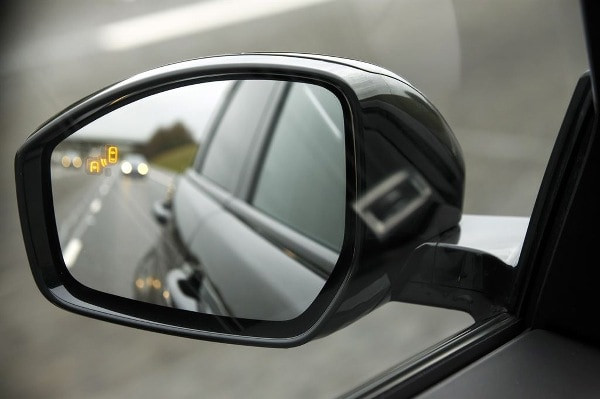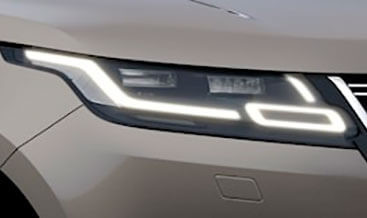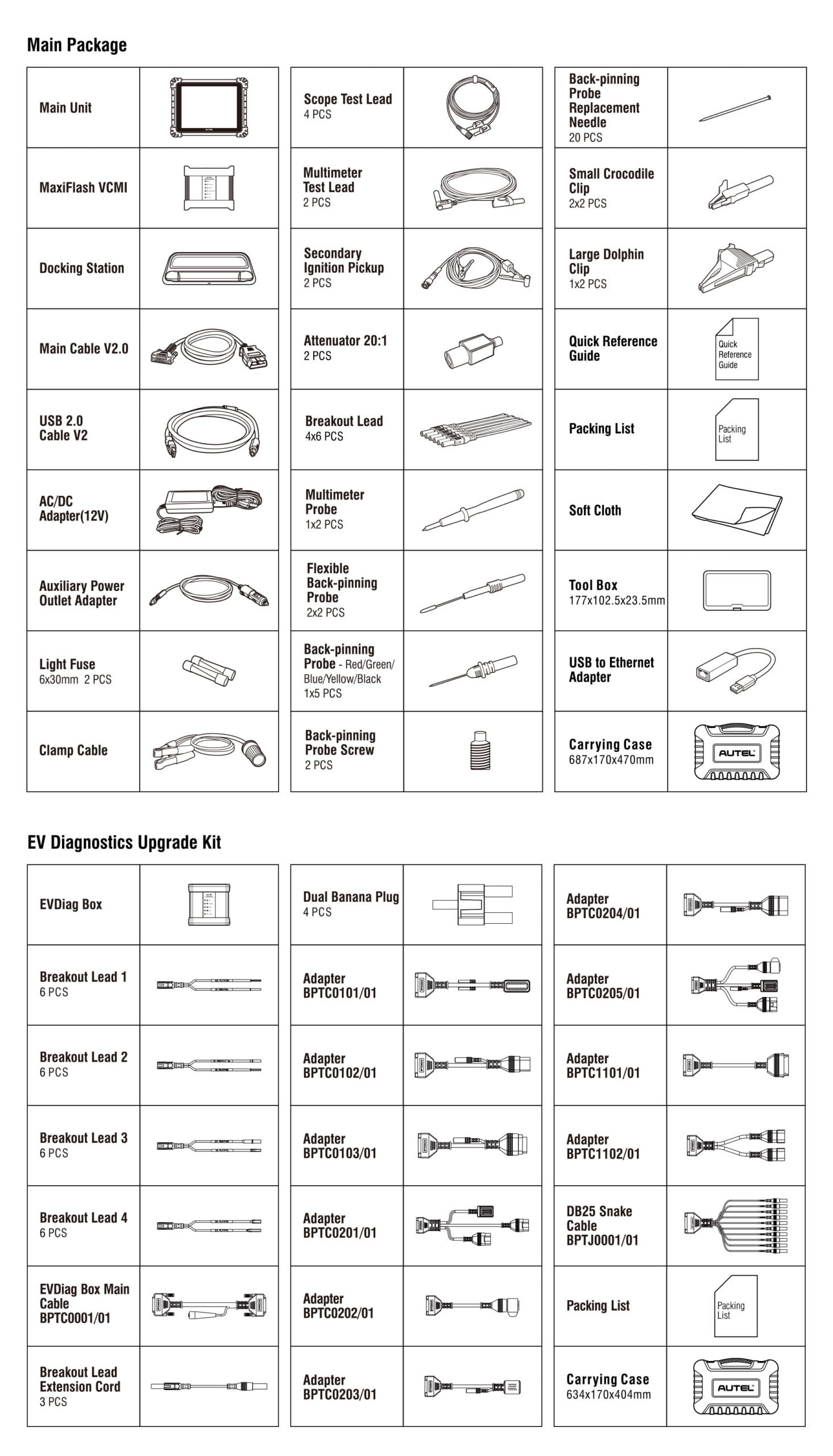Range Rover Sport Reverse Traffic Detection: Enhanced Safety Guide
Range Rover Sport Reverse Traffic Detection, also known as a blind spot system, is a crucial safety feature that significantly reduces the risk of accidents while reversing. At CARDIAGTECH.NET, we understand the importance of advanced safety systems in modern vehicles. This guide provides an in-depth look at Range Rover Sport’s Reverse Traffic Detection (Blind Spot System), covering its functionality, benefits, maintenance, and how it enhances overall driving safety. Invest in your safety and explore top-notch diagnostic tools at CARDIAGTECH.NET to keep your Range Rover in peak condition.
1. Understanding Range Rover Sport Reverse Traffic Detection
Reverse Traffic Detection (RTD), often part of a broader blind spot monitoring system, is designed to alert drivers to vehicles approaching from the sides when backing out of a parking space or driveway. This system uses radar sensors to detect approaching vehicles and provides visual or auditory warnings to the driver, significantly improving safety and preventing accidents.
1.1 How Reverse Traffic Detection Works
The Reverse Traffic Detection system operates using radar sensors typically located in the rear bumper. These sensors scan the area behind the vehicle for approaching traffic. When a vehicle is detected, the system alerts the driver through:
- Visual Alerts: Lights in the side mirrors or on the dashboard illuminate.
- Auditory Alerts: A beeping sound or other audible warning is emitted.
- Haptic Feedback: Some systems may also provide a vibration in the steering wheel or seat.
1.2 Components of the System
The key components of a Reverse Traffic Detection system include:
- Radar Sensors: These sensors emit radar waves to detect moving objects.
- Control Module: This module processes the signals from the sensors and determines if a warning is necessary.
- Warning Indicators: These are the visual and auditory alerts that inform the driver of potential hazards.
- Software: Sophisticated algorithms interpret the sensor data and minimize false alarms.
1.3 Benefits of Reverse Traffic Detection
- Enhanced Safety: Reduces the risk of collisions when reversing.
- Improved Awareness: Helps drivers be more aware of their surroundings.
- Increased Confidence: Provides added confidence when maneuvering in tight spaces.
- Reduced Stress: Makes reversing less stressful, especially in busy areas.
The image shows the rear radar sensors installed in the bumper of a Range Rover Sport, highlighting their role in detecting approaching vehicles.
2. Range Rover Sport Specifics
Range Rover Sport models come equipped with advanced driver-assistance systems, including Reverse Traffic Detection, which is part of the broader suite of safety technologies. The specific features and performance can vary by model year and trim level.
2.1 Model Year Variations
- 2015 Range Rover Sport: The Autobiography trim includes Blind Spot Monitoring with Closing Vehicle Sensing and Reverse Traffic Detection.
- 2016-2020 Range Rover Sport: These models typically include Reverse Traffic Detection as part of an optional driver assistance package or as standard on higher trims.
- 2021-Present Range Rover Sport: Newer models feature enhanced versions of the system with improved sensor range and accuracy.
2.2 Trim Level Differences
The availability of Reverse Traffic Detection often depends on the trim level:
- Base Models (SE, HSE): May offer RTD as an optional upgrade.
- Higher Trims (Supercharged, Autobiography): Typically include RTD as a standard feature.
2.3 Performance Metrics
- Detection Range: The system can typically detect vehicles approaching from up to 25-30 meters.
- Response Time: The system provides alerts within milliseconds of detecting a potential hazard.
- Accuracy: Advanced algorithms minimize false positives, ensuring reliable alerts.
3. Troubleshooting Common Issues
Even with advanced technology, issues can arise. Understanding common problems and their solutions can help maintain the effectiveness of the Reverse Traffic Detection system.
3.1 Common Problems
- False Alarms: The system may trigger alerts when no vehicle is present.
- System Failure: The system may stop working altogether.
- Reduced Sensitivity: The system may not detect vehicles in certain conditions.
- Sensor Obstruction: Dirt, snow, or other obstructions can block the sensors.
3.2 Diagnostic Steps
- Check Sensor Condition: Ensure the sensors are clean and free from obstructions.
- Review System Settings: Verify that the system is enabled in the vehicle settings.
- Scan for Error Codes: Use a diagnostic tool to check for any error codes related to the system. CARDIAGTECH.NET offers a range of diagnostic tools perfect for this.
- Inspect Wiring and Connections: Check for any damaged or loose wiring connections.
3.3 Solutions
- Cleaning Sensors: Regularly clean the sensors with a soft cloth to remove dirt and debris.
- System Reset: Perform a system reset through the vehicle’s infotainment system.
- Professional Diagnosis: If issues persist, seek professional diagnosis and repair at a certified service center.
- Component Replacement: Faulty sensors or modules may need to be replaced.
4. Maintenance and Care
Proper maintenance is crucial to ensure the Reverse Traffic Detection system functions reliably.
4.1 Regular Inspections
- Visual Inspection: Regularly check the sensors for any signs of damage or obstruction.
- Functional Test: Periodically test the system to ensure it is providing accurate alerts.
4.2 Cleaning Procedures
- Gentle Cleaning: Use a soft, damp cloth to clean the sensors. Avoid using abrasive cleaners.
- Winter Maintenance: Clear snow and ice from the sensors during winter months.
4.3 Software Updates
- Stay Updated: Ensure the vehicle’s software is up-to-date to receive the latest system enhancements and bug fixes.
- Professional Updates: Have software updates performed by a certified service center.
5. Integrating with Other Safety Systems
Reverse Traffic Detection often works in conjunction with other safety systems to provide comprehensive protection.
5.1 Blind Spot Monitoring (BSM)
BSM monitors the areas alongside the vehicle and alerts the driver if another vehicle is in the blind spot. RTD complements BSM by covering the area behind the vehicle when reversing.
5.2 Lane Departure Warning (LDW)
LDW alerts the driver if the vehicle is drifting out of its lane. This system, combined with RTD, provides enhanced situational awareness.
5.3 Automatic Emergency Braking (AEB)
AEB can automatically apply the brakes to prevent or mitigate a collision. When combined with RTD, AEB can provide an additional layer of safety when reversing.
6. Aftermarket Solutions
While Range Rover Sport comes with advanced safety features, aftermarket solutions can offer additional enhancements or replacements for older systems.
6.1 Types of Aftermarket Systems
- Standalone RTD Systems: These systems can be installed on vehicles that do not have factory-installed RTD.
- Integrated Systems: Some aftermarket systems integrate RTD with other safety features, such as backup cameras and parking sensors.
6.2 Installation Considerations
- Professional Installation: It is recommended to have aftermarket systems installed by a professional to ensure proper functionality.
- Compatibility: Ensure the system is compatible with the vehicle’s electrical system.
6.3 Benefits and Drawbacks
- Benefits: Affordability, customization, and the ability to add features to older vehicles.
- Drawbacks: Potential for compatibility issues, reliability concerns, and the need for professional installation.
7. Legal and Insurance Implications
Understanding the legal and insurance aspects of safety systems like Reverse Traffic Detection is important for drivers.
7.1 Legal Requirements
- No Mandates: Currently, there are no legal mandates requiring vehicles to have Reverse Traffic Detection systems.
- Safety Standards: However, these systems contribute to meeting overall vehicle safety standards.
7.2 Insurance Benefits
- Potential Discounts: Some insurance companies offer discounts for vehicles equipped with advanced safety features like RTD.
- Reduced Premiums: By reducing the risk of accidents, RTD can potentially lower insurance premiums.
7.3 Liability Considerations
- Driver Responsibility: Even with RTD, drivers are still responsible for checking their surroundings when reversing.
- System Limitations: Drivers should be aware of the system’s limitations and not rely solely on it.
8. Future Trends
The technology behind Reverse Traffic Detection continues to evolve, with future systems promising even greater accuracy and functionality.
8.1 Enhanced Sensors
- Higher Resolution: Future sensors will offer higher resolution and greater range.
- Improved Object Recognition: Advanced algorithms will improve the system’s ability to differentiate between vehicles, pedestrians, and other objects.
8.2 Integration with AI
- Artificial Intelligence: AI will play a greater role in analyzing sensor data and predicting potential hazards.
- Adaptive Learning: Systems will learn from driving patterns to provide more personalized alerts.
8.3 Enhanced User Interface
- Augmented Reality: Future systems may use augmented reality to display alerts directly in the driver’s line of sight.
- Haptic Feedback: More sophisticated haptic feedback systems will provide intuitive alerts.
9. Expert Insights
Industry experts and automotive professionals offer valuable perspectives on the importance and effectiveness of Reverse Traffic Detection systems.
9.1 Automotive Engineers
- System Reliability: Engineers emphasize the importance of robust system design and rigorous testing to ensure reliability.
- Integration Challenges: Integrating RTD seamlessly with other vehicle systems presents technical challenges.
9.2 Safety Advocates
- Accident Reduction: Safety advocates highlight the potential of RTD to significantly reduce backing accidents.
- Public Awareness: Increasing public awareness of the benefits of RTD is crucial.
9.3 Repair Technicians
- Diagnostic Expertise: Technicians need specialized training to diagnose and repair RTD systems effectively.
- Component Availability: Ensuring the availability of replacement parts is essential for maintaining these systems.
10. Call to Action
Ensure your Range Rover Sport’s Reverse Traffic Detection system is functioning optimally with the right tools and expertise from CARDIAGTECH.NET.
10.1 Why Choose CARDIAGTECH.NET?
- Expertise: We specialize in providing diagnostic solutions for advanced automotive systems.
- Quality Tools: Our range of diagnostic tools is designed to accurately assess and maintain your vehicle’s safety features.
- Customer Support: We offer exceptional customer support to assist you with your diagnostic needs.
10.2 Contact Us
For expert advice and top-quality diagnostic tools, reach out to CARDIAGTECH.NET today:
- Address: 276 Reock St, City of Orange, NJ 07050, United States
- WhatsApp: +1 (641) 206-8880
- Website: CARDIAGTECH.NET
Take the first step towards enhanced safety and vehicle maintenance. Contact CARDIAGTECH.NET now to learn more about how we can help you keep your Range Rover Sport in top condition. Our tools offer significant advantages, reducing repair time and increasing accuracy, ultimately boosting your garage’s efficiency and customer satisfaction. Don’t wait—ensure your peace of mind with CARDIAGTECH.NET.
A technician uses a diagnostic tool from CARDIAGTECH.NET to assess the Reverse Traffic Detection system of a Range Rover Sport.
FAQ: Range Rover Sport Reverse Traffic Detection (Blind Spot System)
1. What is Range Rover Sport Reverse Traffic Detection?
Reverse Traffic Detection is a safety feature that uses radar sensors to detect vehicles approaching from the sides when you’re backing up. It alerts you to potential hazards you might not see.
2. How does the Reverse Traffic Detection system work?
The system uses radar sensors in the rear bumper to scan for approaching vehicles. If a vehicle is detected, it provides visual and/or auditory alerts to the driver.
3. Which Range Rover Sport models have Reverse Traffic Detection?
The availability varies by model year and trim level. Generally, higher trims like the Autobiography include it as standard, while base models may offer it as an option.
4. What should I do if my Reverse Traffic Detection system isn’t working?
First, check if the sensors are clean and unobstructed. Then, review your vehicle settings to ensure the system is enabled. If the problem persists, use a diagnostic tool or consult a professional.
5. Can I install an aftermarket Reverse Traffic Detection system?
Yes, but professional installation is recommended to ensure compatibility and proper functionality.
6. Are there any legal requirements for having Reverse Traffic Detection?
No, there are currently no mandates requiring vehicles to have Reverse Traffic Detection systems, but it contributes to overall safety standards.
7. Will having Reverse Traffic Detection lower my insurance premiums?
Some insurance companies offer discounts for vehicles equipped with advanced safety features like Reverse Traffic Detection.
8. How often should I have my Reverse Traffic Detection system checked?
Regularly inspect the sensors visually and test the system periodically to ensure it provides accurate alerts. Schedule professional checks during routine maintenance.
9. What are the limitations of Reverse Traffic Detection?
Drivers should be aware that the system has limitations and should not rely solely on it. It’s still important to manually check surroundings when reversing.
10. Where can I get my Range Rover Sport’s Reverse Traffic Detection system diagnosed and repaired?
CARDIAGTECH.NET offers expert diagnostic solutions and quality tools to assess and maintain your vehicle’s safety features. Contact us for assistance.
By providing this detailed guide, CARDIAGTECH.NET aims to empower Range Rover Sport owners with the knowledge and tools necessary to maintain and optimize their vehicle’s safety features.






